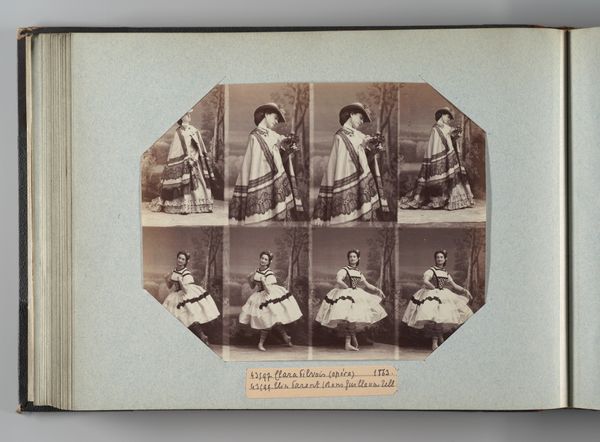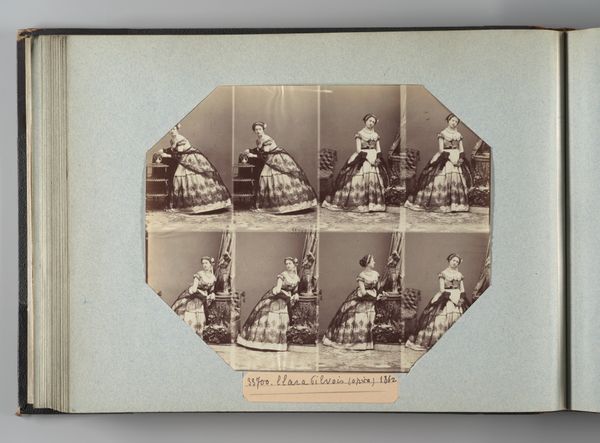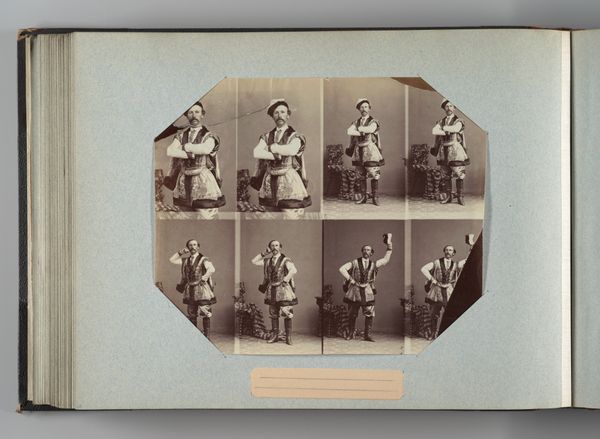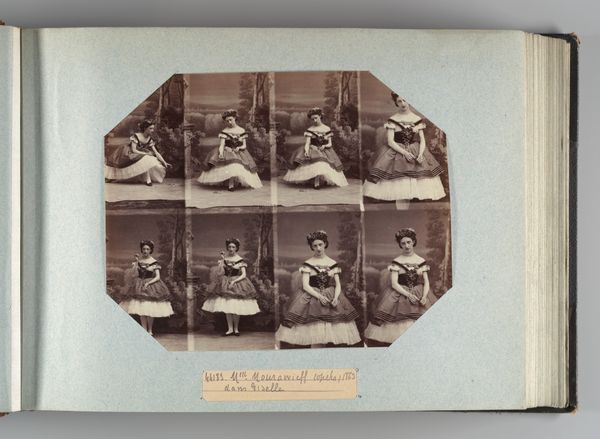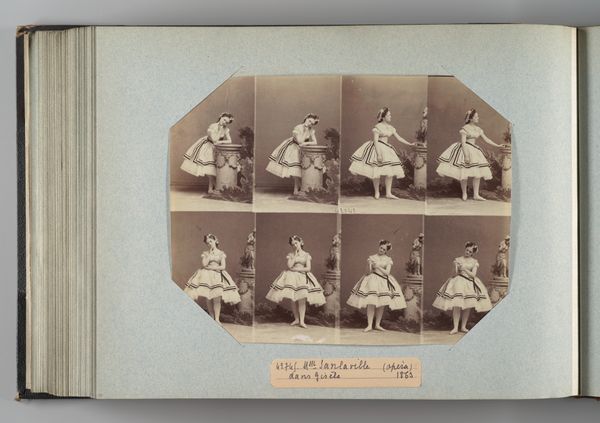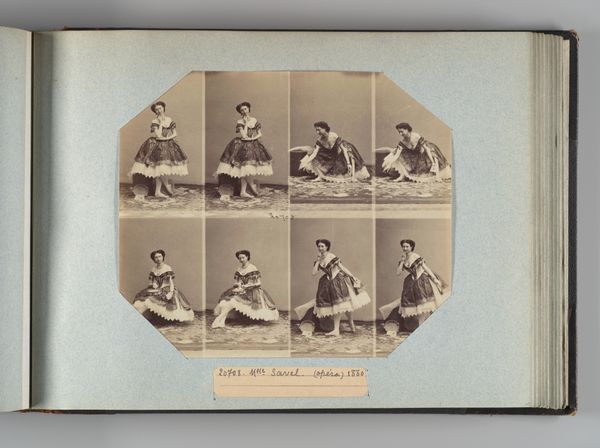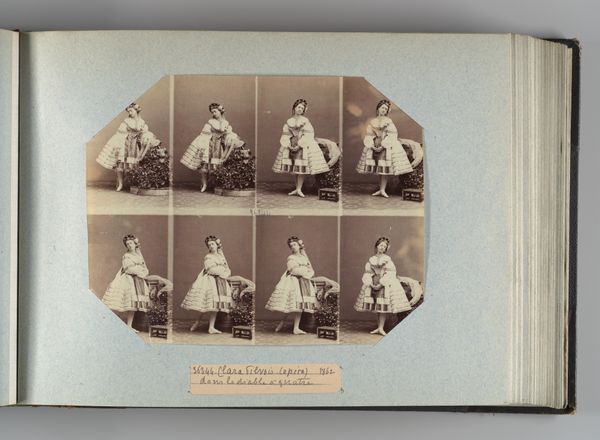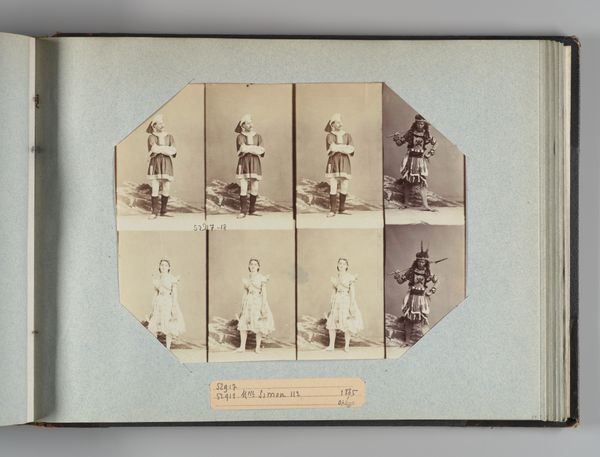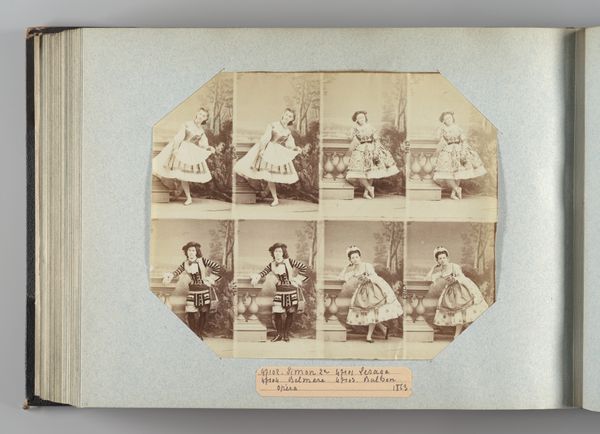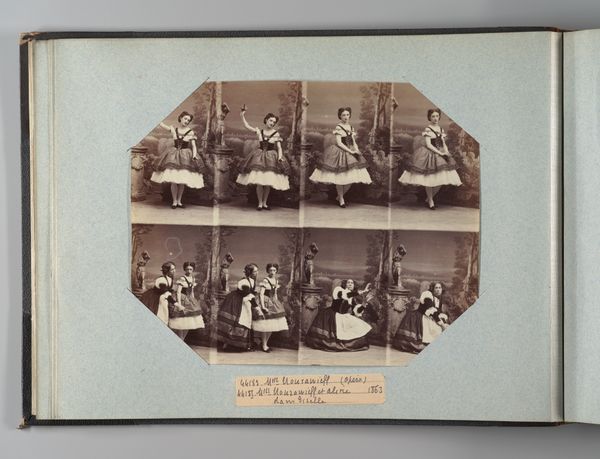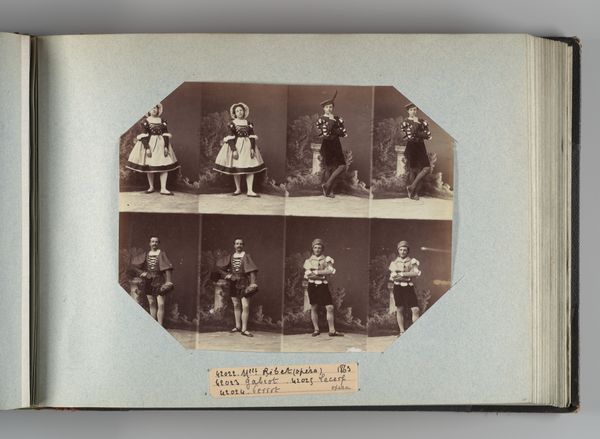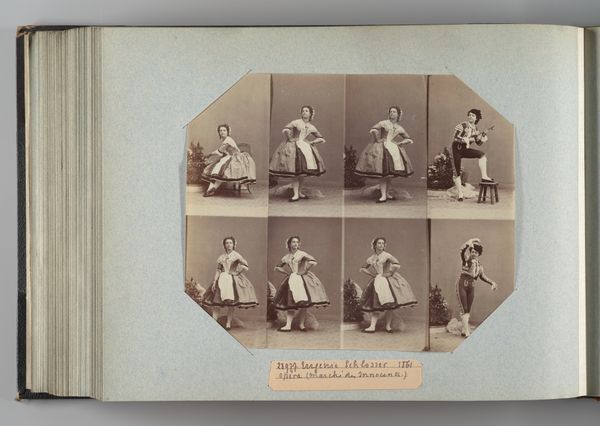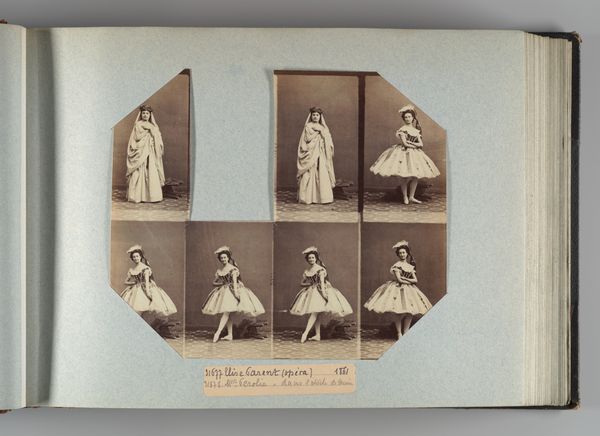
photography, albumen-print
#
portrait
#
16_19th-century
#
photography
#
albumen-print
Dimensions: Image: 7 3/8 × 9 1/4 in. (18.8 × 23.5 cm) Album page: 10 3/8 × 13 3/4 in. (26.3 × 35 cm)
Copyright: Public Domain
Curator: Here we have an albumen print from 1862 by André-Adolphe-Eugène Disdéri, titled "Clara Pilvois," currently held in the collection of the Metropolitan Museum of Art. Editor: The multiplication of Clara—it's like she's caught in a charming, slightly melancholy loop, isn’t it? Each image echoes the next, creating a mesmerizing effect... Almost theatrical. Curator: Indeed. Disdéri was a pioneer in the carte-de-visite format, a process involving multiple lenses on a single plate. This allowed for mass production and wide distribution, fundamentally changing portraiture. These images became accessible objects of consumption. Editor: And look at her dress— the material's weight and pattern suggest an incredible amount of labor. You can almost hear the rustle of the fabric and imagine the atelier where it was made. Does the multiplication imply that fashion also becomes reproducible, a spectacle itself? Curator: Absolutely. The burgeoning textile industry fed this culture of readily available fashion. Pilvois' dress, likely mass-produced, speaks to the complex relationship between industry, artistry, and individual expression in the 19th century. Notice, also, the careful arrangement, how Disdéri constructs these poses to appeal to bourgeois sensibilities. Editor: It makes you wonder about her expression in all these. Does it denote any social standing? Is there a story there that challenges or embraces the consumer’s expectations of what such an object means? It has that quiet allure; and you ponder the gap between her internal reality and her photographic representation. A dancer's stillness, but also her own narrative, captured between those frames. Curator: Precisely, and this print would have been accessible, commodified. Think of how it circulated, who owned it, who engaged with this representation. Editor: It's captivating how Disdéri turns photography into a performative act and comments on the proliferation of images. The dance with materials, labor, and that singular subject becomes something other; that quiet and melancholy beauty. Curator: Yes. We see here photography, in its material and industrial context, contributing to cultural narrative construction.
Comments
No comments
Be the first to comment and join the conversation on the ultimate creative platform.
